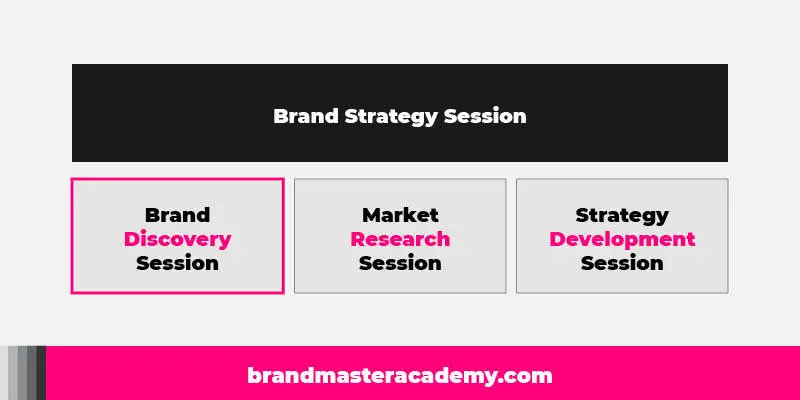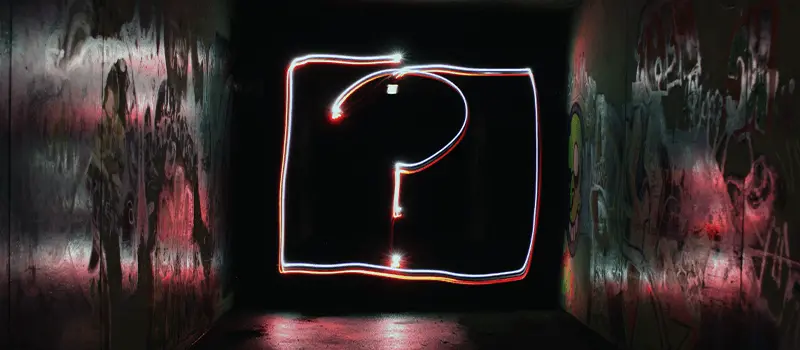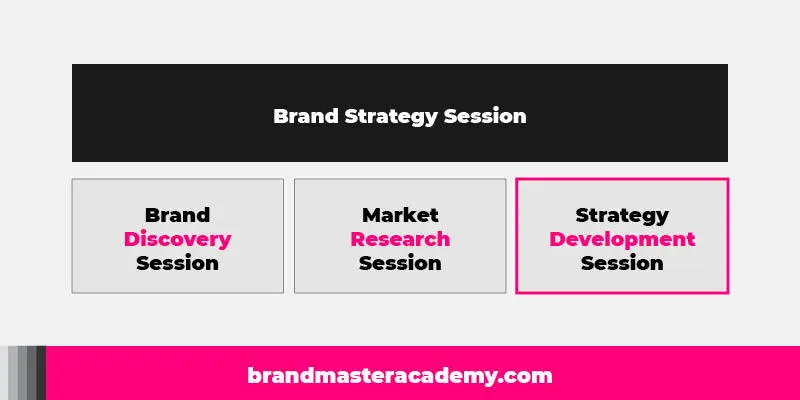So, how do you run a brand strategy session and more importantly, how do you do it in a way that will produce strategic brands with an edge?
Brand strategy is an art and experienced brand strategists are the first to emphasise the importance of the process.
Rush or skip any one of the critical process steps and you’ll end up with a poorly positioned or misaligned brand, struggling to resonate with its intended audience.
The key to a well-developed strategic brand that makes connections and attracts loyal followers?
A well choreographed brand strategy session.
In this article, you’ll learn how to run a successful brand strategy session like a pro.
How To Run A Brand Strategy Session
[The Video Breakdown]
One-click subscribe for video updates
How To Run A Brand Strategy Session
[15-Step Framework]
![How To Run A Brand Strategy Session [15-Step Framework]](https://brandmasteracademy.com/wp-content/uploads/2020/03/How-To-Run-A-Brand-Strategy-Session-15-Step-Framework.webp)
In a previous article we broke down exactly what a brand strategy session is which gives a high level overview.
Before you define your brand strategy session processes, you must first decide upon the approach that’s best suited to you, your personality, your circumstances and of course your market position.
You may want to build your processes around “Brand Strategy Workshops” and meet with your clients face to face.
Or you may prefer to run remote sessions via phone calls or video conferences to gather your information and gain insights.
Either way, here is an effective framework you can implement into your business processes.
Stage 1
Discovery Session Process

PRO Brand Strategy BluePrint
Build Brands Like A Pro Brand Strategist

Step #1
Schedule Your Session

Once you engage your prospect, it’s important to set up a time as quickly as possible.
Your prospects have thousands of brands all vying for their attention and that includes your direct competitors.
Chances are, you’re not the only branding specialist they’re engaging.
It’s important to note however, that this is not about chasing them, calling them 10 times or coming across needy.
It’s about being swift with your response and direct with your communication.
Offer them a choice of two sessions within the coming week. This sense scarcity and urgency is far more likely to drive action and increase the perceived value of your time than simply asking them to tell you when they’re available.
Explore Brand Strategy
Programs & Tools
Step #2
Prep For The Session

When scheduling the appointment, ask your prospect some very basic business questions, which will give you enough to gather some basic preliminary information.
Data such as their industry, their location, any known competitors etc will allow you to perform some simple research to arm you with a little understanding of their market landscape before you speak to them.
These insights will allow you to speak from a position of knowledge, which will earn trust with your prospect.
Step #3
Build Rapport Through Human Engagement

One of the keys to a successful client relationship is through human connection.
Although you’re a professional and you want to portray your professionalism in your conversations, it’s important not to come across as a pre-recorded robot full of sound bites and statistics.
There is a time and a place for this analytical data, but early on, you want to make a human connection so that data will hold more weight through the trust you’ve earned.
Tell a brief story, anecdote or even better, a story of someone in a very similar situation to your client and why that’s a story you like to tell.
This gives you an opportunity to show that you’re an actual human who they’ll be able to easily speak to throughout the process.
Step #4
List The Information You Want To Gather

You’ll know from your brand strategy framework (I.e. how you develop your brand strategy), what information you want to gather from your prospect.
How you structure your questions will set the tone for how your client answers.
You want to give them the freedom to give you as much information as possible so open ended and broad based questions can help you do that.
Step #5
Stay Focused On Obtaining Clarity

It’s important to keep the discovery session structured.
You will probably have a defined duration for the session, which your prospect has booked out in their diary. It’s important that you respect their time while also gathering the information you need.
If your prospect is a talker and you only get a fraction of the information you needed, they won’t blame themselves for going over the allocated time.
It’s important to know when to let your client speak (eg. If they’re speaking about the exciting future of their business) and when to get them back on track.
Step #6
Identify Ambiguity

Listen for answers provided by your clients where they’re unsure or unclear about the topic you’ve asked them about.
This provides an opportunity for you to discuss the importance of getting some clarity in this area and because their ambiguity suggests a lack of clarity, they’ll be grateful for this direction.
Eg. If your client gives you little more about their audience other than their profession, sex and age then they don’t have a clear profile of their target audience.
Step #7
Post-Session Summary

Mirroring is the technique of repeating what your client has said to you using their own words and a variation of their words to show empathy.
Use mirroring, rephrasing and coaching, relay the information you’ve gathered from your client back to them.
This allows you to confirm the accuracy of the information but it also allows you to show that you were listening and that you understand their situation, ideas, vision and aspirations.
Stage 2
Research Session Process

Step #8
Audience Persona(s)

Define your target audience using one or more audience personas.
Your clients business may have a multiple audience personas to which you’ll need to tailor the messaging. It’s up to you to identify these personas within the research phase.
Use demographics and psychographics to uncover their situation and behaviours and map their journey to uncover their challenges an pain-points.
Continue to dig deeper until you discover their emotional investment in overcoming their challenges and use this in your brand messaging.
Step #9
Uncover Your Audience Archetype

Uncover the characteristics and personality traits of your audience to better understand their personality type.
Use the archetype framework to align their personality to an archetype or mix of archetypes.
This information will provide you with deep insights as to the characteristics they’re most attracted to which you can then apply to your brand personality development.
Step #10
Competitive Analysis

Identify the most relevant direct and indirect competitors who are serving the audience group you’ve identified in the last step.
Use social media pages, groups forums and review sites to determine how this audience feels about their existing options and where the strengths and weaknesses of you competitors lie.
List these competitors side by side to perform a comparison and look for patterns and gaps in the market.
Stage 3
Strategy Session Process

Step #11
Start With Aspirations

Use the information gathered in the discovery session related to your client’s internal beliefs, commitments and aspirations to define the internal brand.
This foundational brand element ensures that the brand is built with the ideas of the leadership team at the core of the brand.
Step #12
Map The Competitive Landscape

Using the information gathered in the research session, map the market landscape to understand the audiences’ wants, needs, fears and desires along with the strengths, weaknesses gaps and opportunities of your competitors.
A high level understanding of this information creates the perfect environment to identify your differentiation strategy.
Step #13
Identify The Market Position

Take the insights; gaps and opportunities you’ve gathered and stress test each and every one as a potential differentiation strategy opportunity.
Identify the potential value of this difference to your audience and define the reason it provides something unique.
Use creative thinking to expand the idea to uncover how it could be better, faster, more convenient, easier etc.
Step #14
Uncover Your Brand Character

Using the information you’ve gather on your audiences’ personality, develop and archetype or archetype mix you can use as the foundation for your brand personality.
Expand these characteristics to include opinions, attitudes and point’s of view of the industry and the wider world.
Double down on the characteristics you’ve defined in your brand personality to identify your brand’s tone of voice and language profile.
Step #15
Develop Your Communication Strategy

Identify the key messages you want your audience to understand about your brand so they see the brand in its intended light.
These messages will be delivered at every touch point so make up the communication that will shape the audience’s perceptions.
Use the audience journey from the earlier section to develop a brand storytelling framework that resonates with who the audience is, their challenges and pain-points.
Conclusion
Developing a strategic brand that is in complete alignment from foundation to position to expression, takes well-defined processes.
Adopt this process and adjust as you go to suit your own branding business, personality and of course, market position.
Are you holding brand strategy sessions in person or remotely?
Will you take anything from this framework and implement it into your own processes?
I’d love to know, drop me a line in the comments below.
On-Demand Digital Program
Brand Master Secrets
Make the transition from hired-gun to highly valued brand strategist in less than 30 days. The systems, frameworks and tools inside this comprehensive program are all you need to level up.









Hi Stephen
Finished the course, and now gearing up for the first Brand Strategy session.
There’s just one thing i’m still a little unclear about. And it’s possible that this has been covered, so my apologies if it has.
So, there’s obviously 3 ‘sessions’:
1. Brand Discovery Session
2. Market Research Session
3. Strategy Development Session
My question is: Do sessions 2 & 3 require the client (and a meeting) or are they conducted by myself…and they’re more process than ‘session’?
Thanks
Hey Patrick, good question.
It comes down to you, your business and the service you want to offer (and who you’re offering it to).
Session 2 doesn’t require the client input, though you may revisit the research depending on what ideas your client has.
Session 3 – Some clients want you to do everything (without their involvement) though many will appreciate being part of the development process (This can come in the form of a Collaboration session or a full brand strategy workshop – in-person or remote).
It’s your job (based on your audience and service) to define how you want to approach the brand development.
Hope this helps Patrick
Hi Stephen,
Thanks for putting this together. It was really insightful as I was going to hold a session without putting 2 and 3 into consideration but now, I know better.
Thanks again.
Thanks Bliss
How would you approach a brand strategy session for a client with both B2B and B2C focus? (i.e. franchisor that both seeks out franchisee investors and needs to service day-to-day clients)? I realize at the core it would stay consistent, so would you just expand certain exercises, such as target audience and messaging framework, to address both aspects of the business? Thanks in advance!